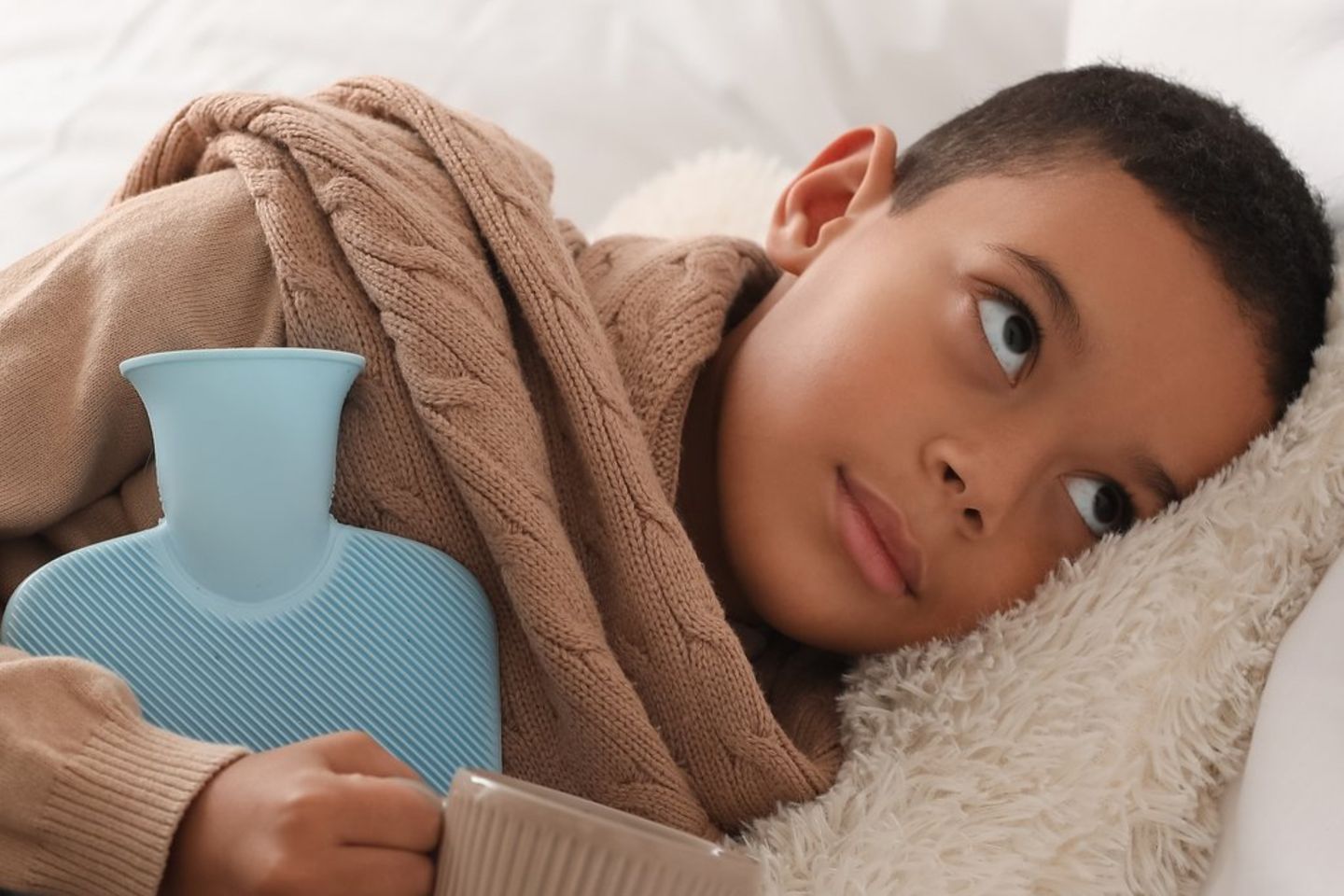Toasted skin syndrome
This way, skin damage caused by hot water bottles can be avoided
Cuddle up in bed with a hot water bottle: There is hardly anything cozier in winter.
© Pixel Shot/Shutterstock.com
Who doesn’t love snuggling up with a warm hot water bottle during the cold season? But this can harm the skin.
In the cold season, hot water bottles are indispensable companions for many people to snuggle up and warm up. But behind the pleasantly warm feeling there is a little-known risk: the so-called toasted skin syndrome.
As beneficial as heat can be – whether it’s cold, stomach or back pain: intensive use of hot water bottles, grain pillows or electric blankets can lead to heat-related skin damage.
What is Toasted Skin Syndrome?
Toasted skin syndrome is not – as the name suggests – a burn or “roasting” of the skin, but rather a reticulated red-brown rash. It occurs when prolonged or repeated exposure to heat causes damage to the superficial blood vessels. This causes erythrocytes to leak out. Their degradation products, as well as released melanin, are deposited in the skin – resulting in hyperpigmentation. The skin turns red.
Technically, toasted skin syndrome is known as “erythema ab igne” (“redness caused by fire”). The whole thing is not new: it used to be a common occurrence among professional groups that had a lot of contact with heat, such as blacksmiths, glassblowers or bakers. In addition to hot water bottles or grain pillows, heated seats in the car or laptops placed on your lap are also among the main causes.
The discoloration is not painful and usually does not cause any other symptoms. However, the skin lesions can become chronic if the skin continues to be regularly exposed to heat. The skin’s appearance normally returns to normal within a few weeks. Moisturizers or aloe vera can aid healing.
Avoid toasted skin syndrome
The most important measure against toasted skin syndrome is to avoid heat sources. If you want to work with a laptop on your lap, you should at least put a tablet or other surface between your body and the device.
Hot water bottles should never be in direct contact with bare skin: they can be placed in specially designed cases or separated from the skin by clothing or a blanket. In addition, you should generally not fill hot water bottles with 100 degree hot water, as this can cause burns. It’s better to just heat it to 70 or 80 degrees.
